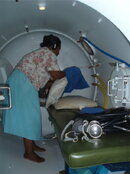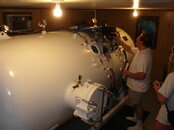- Messages
- 63,269
- Reaction score
- 16,549
So sorry to hear you had a problem, Kev.
What did you think of the ambiance at Kuakini Chamber? Did they stuff any brain dead bodies in there with you?
Never underestimate the risk of long, sedentary flights. My freediver friend just lost his brother, a triathalon athlete. He got on in Honolulu and was found dead in Denver. I think they suspected a PE.
Glad you could at least vaca a bit at the end....
I take two baby aspirins whenever I fly and several days before deep dives. I know it is discredited by some but I like the little rush of control it gives me, along with getting uber-hydrated.prescribed baby aspirin to thin my blood out in preparation for the flight back to Los Angeles.
What did you think of the ambiance at Kuakini Chamber? Did they stuff any brain dead bodies in there with you?
Never underestimate the risk of long, sedentary flights. My freediver friend just lost his brother, a triathalon athlete. He got on in Honolulu and was found dead in Denver. I think they suspected a PE.
Glad you could at least vaca a bit at the end....






